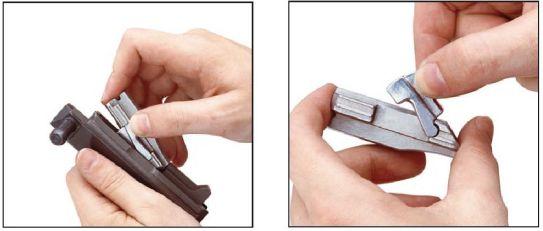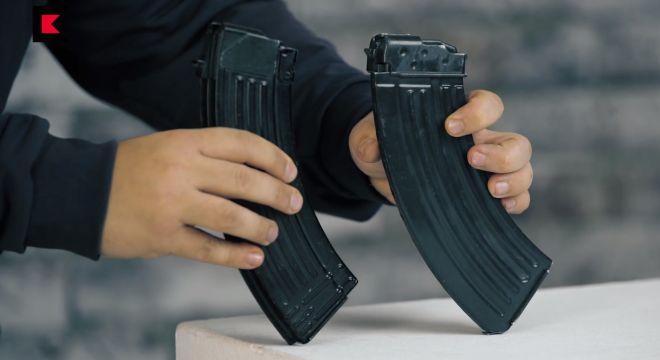No, Vz. 58 is not an AK version. The recently released video by Kalashnikov Media was just a good additional source to start talking about this topic. This rifle is so many times confused with the AK, that even Kalashnikov Media dedicated a separate video in their video series called “Kalashnikov: Around the World” to tell the history of this Czechoslovakian firearm and explain why it is not an AK. The point of this article is to show that these are different rifles. Which one is a superior design? It is an arguable matter. Both have advantages and shortcomings.
Brief History of Vz. 58
Taking a look at the history gives us a better understanding of why this rifle is confused with an AK and why it is different.
In the ’50s Czechoslovakia has become a Warsaw Pact country, which meant that they became allies with the Soviet Union. From the small arms standpoint, for most of the countries of that agreement that meant adopting and/or domestically producing the same firearms (AKs) as the Soviet Union had adopted. That’s the easy way and also it provides almost complete parts compatibility with the larger ally country. However, having a rich firearms designing history, Czechs decided to go their own way designing their own assault rifle.

Jiří Čermák
Three designers were working on making the new rifle. The designer of one of the versions was Václav Holek, who by that time was a renown arms designer. Holek is the designer of ZB vz. 26 machine gun. Next gun was designed by Josef and František Koucký, who would later be known for designing the iconic CZ 75 pistol. The third designer was a less know young man named Jiří Čermák. Even having such strong competition, Čermák’s rifle won the trials. His rifle was tested both in Czechoslovakia and in the Soviet Union. It proved to be a satisfactory design for adoption and ultimately become the Samopal Vzor 58.
Initially, the rifle was to be chambered in Czech intermediate cartridge – 7.62x45mm, which was developed before the Warsaw Pact and Czechs had the Vz. 52 rifle chambered in this caliber. After signing the mentioned agreement with the Soviet Union, Czechoslovakia had to adopt the 7.62x39mm cartridge to have ammunition compatibility with the allies. As a result, the new rifle became chambered in 7.62x39mm.
Design Differences of Vz. 58 from AK-47

Vz. 58 field stripped
The cartridge is perhaps the only major similarity between the VZ. 58 and AK. In fact, there are so many design differences that it is easier to look for similarities than to point out the differences. Nevertheless, I think it would be interesting to take a look at differences between these two rifles:
- Gas System. Despite the fact that both Vz. 58 and AK-47 are gas operated firearms, the Czech rifle utilizes a short stroke gas piston whereas the AK-47 has a long stroke system.
- Lockup. Vz. 58 uses a locking system with a tilting locking block. The lockup of the AK-47 mechanism is accomplished by a rotating bolt.

Disassembly of the Vz. 58 bolt. Note the separate locking piece shown on right. (image from a CZ manual).
- Hammer. Vz. 58 has a linear hammer whereas the AK-47 has a pivoting hammer. Sometimes Vz. 58 is referred to as striker fired which is not quite correct. Although the linear hammer works similar to a striker, there is a separate firing pin in the bolt which is hit by the linear hammer. The Vz.58’s mainspring that powers the linear hammer, is located below the recoil spring.
- Bolt Stop. Vz. 58 has a bolt stop mechanism. As you know, AKs lack such mechanism at all. With the last round fired, the bolt of the Vz. 58 is locked in its rearmost position. It can be released by either pressing the bolt release button located near the magazine release lever or you can pull the BCG back and release it to make it close the action.
- Magazines and Feeding. Although the Vz. 58 and AK-47 magazines look extremely similar, they are not interchangeable. You can’t even attach Vz. 58 magazines to the AKs and vice versa.

Note that the Vz. 58 magazine (the right one) has an angled flat surface on the bottom rear portion
Another interesting feature of the Vz. 58 magazines is the flat surface at the bottom rear portion. It allows having a much steadier point of contact when resting the gun on the magazine. AKs got such feature only recently with the introduction of later version AK-12 and AK-15 rifles. Additionally, Vz. 58 has a slot in the bolt carrier to make it possible to load the magazines from stripper clips directly from the top of the gun.
- Safety Selector. AKs have a distinctive large safety selector lever which doubles as a dust cover for the charging handle slot. Vz. 58 has a thumb-style safety selector on the right side of the receiver.
- Stock Attachment. Different AK stocks require differently machined rear portion of the receiver or different rear trunnions in case of the stamped receivers. Vz. 58 has a universal stock mounting platform at the rear of the receiver which allows mounting both folding and fixed stocks via a screw.
- Magazine Release Lever. AK-47 has a centered ambidextrous magazine release lever. Vz. 58 magazine release is moved to the left side to make room for the bolt release button. The trigger guard of Vz. 58 also has a different shape designed to make it easier to reach the magazine release lever.
- Dust Cover. If AK dust cover (top cover) goes all along the receiver and is fixed in place via the rear protrusion of the recoil spring guide, the Vz. 58’s top cover comes half way of the receiver. It is fixed in place via a pin and the rest of the receiver is covered by the bolt carrier itself.
- Ejector. Although both rifles use fixed ejectors, they have different designs. In case of AK, the ejector is the extension of the left BCG guide rail. In the Vz. 58 design the ejector is a separate piece installed in the bottom of the receiver.
The disassembly/reassembly procedures of these rifles are also slightly different because of some of the above-described design differences. For disassembling an AK rifle, you need to depress the top cover lock/recoil spring guide rod, remove the top cover, remove the recoil spring assembly, then pull the bolt carrier group all the way back and lift it up. In the case of the Vz. 58, the disassembly starts with pulling the rear pin and removing the top cover with the recoil and main springs attached to it. The reassembly of the Vz. 58 bolt carrier group also requires pulling the trigger to lower the sear and allow the BCG to slide to its forward position. The gas tube on Vz.58 is also attached via a pin rather than a latch of AK design.
These are the design changes that I consider the most significant. There are a lot of other differences like the trigger control group design, furniture, gas tube, shape and angle of the charging handle etc.
Below is the Kalashnikov Media video mentioned in the first paragraph.
Here is also a poster of the Vz. 58 rifle (in Czech).

To download the full resolution version of this poster, click here.
To download a copy of an original Vz. 58 manual (in Czech, dated 1961), click here.
 Your Privacy Choices
Your Privacy Choices
